Integrated Pest Management (IPM) is a science-based pest management process which focuses on managing the ecosystem for the long-term prevention of pests and the damage they cause. The University of California Division of Agriculture and Natural Resources (UCANR) has developed an IPM program dedicated to helping Californians “prevent and solve pest problems with the least unintended impacts on people and their environment.” For the home gardener, a guiding principle of IPM is to understand why your landscape favors particular pests, and then enact changes which will make that environment less attractive to those pests.
One component of the IPM approach is to use biological control measures rather than pesticides to curtail garden pests whenever possible. This usually involves creating conditions that attract the natural enemies of pests. For rodent control, owls are an often-overlooked ally of both home gardeners and farmers.
According to the Altacal chapter of the Audubon Society, ten different species of owls can be found in Butte County. Of these, eight are permanent residents: Barn Owls, Great Horned Owls, Western Screech Owls, Northern Pygmy Owls, Burrowing Owls, Spotted Owls, Long-eared Owls, and Short-eared Owls. Since most owls are nocturnal, they aren't easily seen in the wild, but birders often recognize different species by their distinctive calls. [The National Audubon Society has a website with recordings of the calls of different bird species, including owls]. I've never seen them, but I regularly hear Great Horned Owls and Screech Owls around my home in the foothills above Oroville.

Nest boxes are commercially available but can be expensive. For the DIYer, nest box plans for various owl species are available at no charge from the Cornell Lab of Ornithology. Either the roof or one side of a nest box should be hinged to create a door that can be opened for cleaning after any owlets have fledged and left the nest. Quarter to half-inch holes drilled near the roof will aid air circulation and similar holes in the floor will allow drainage if necessary. Lay wood chips or wood shavings on the floor of the box for bedding. The box should be placed at least 15-20 feet above the ground with the opening facing northeast.
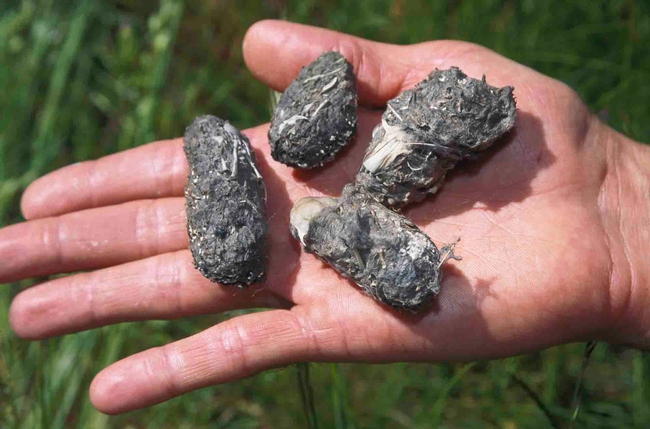
Owl safety is a consideration when deciding if it is appropriate for you to attract them to your property. Do you have high speed roadways nearby where owls could collide with vehicles? Do you or nearby property owners regularly use pesticides, herbicides, or other potentially harmful chemicals? As predators, owls are particularly susceptible to such chemicals as they often become more concentrated as they pass up the food chain. Additionally, the light pollution produced by porch and outdoor lights can be confusing and act as deterrents to these nighttime hunters.
It is important to preserve large trees because most owls prefer mature trees for roosting, hunting, and nesting. Dead snags can provide nesting cavities but can be hazardous in fire areas. Finally, think about family pets. A hungry owl could make a meal of a small dog or house cat. (I have a sneaking suspicion Great Horned Owls are the reason our local feral cat population has been kept in check).
The natural habitat preference of a particular owl species will help guide the decision on which species to attract. Four owl species found in Butte County with varying habitat needs are good examples of how habitat influences owl distribution: Barn Owls, Great Horned Owls, Burrowing Owls, and Western Screech Owls.
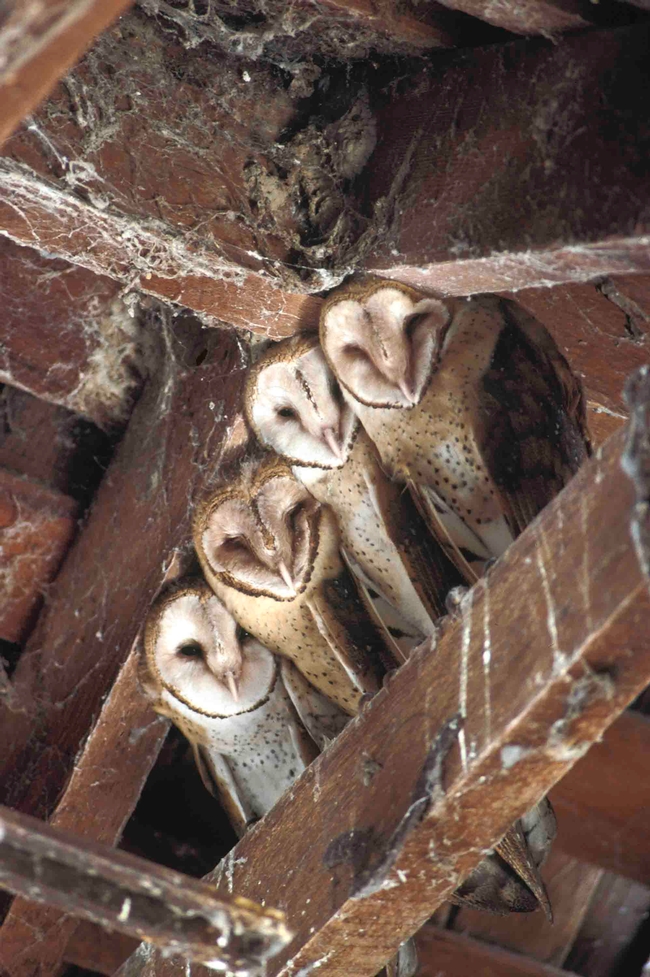
Barn Owls are medium-sized owls, with adults standing 13 to 16 inches tall and weighing between one and one and a half pounds. They usually hunt within one to three miles of their roost and are only mildly territorial, so you can put up several nest boxes in an area with possibly multiple families taking up residence. Great Horned Owls are the fiercest predators of Barn Owls, while collisions with cars also contribute heavily to the Barn Owl death toll.
Barn Owls seem to be the go-to owl when it comes to biological control of rodent pests, dominating the literature on owls and IPM. According to several studies, pocket gophers, mice, and voles constitute most of the Barn Owl diet. In fact, 99.5% of prey creatures studied were agriculture pests, so clearly owls can provide valuable pest control services for farmers. According to UCANR, a family of five Barn Owls, including two adults and three young, will feed on about 1,000 rodents during a season. Because they prefer to hunt in more open areas, they readily hunt in vineyards, alfalfa fields, and along levees, making them valuable allies for farmers practicing IPM. Over a three-year period, one study found that Barn Owls killed more than 30,000 rodents in a single vineyard for a fraction of the cost of trapping or poisoning: “the average cost of trapping was $8.11 per pocket gopher versus $0.34 per rodent taken by Barn Owls.”
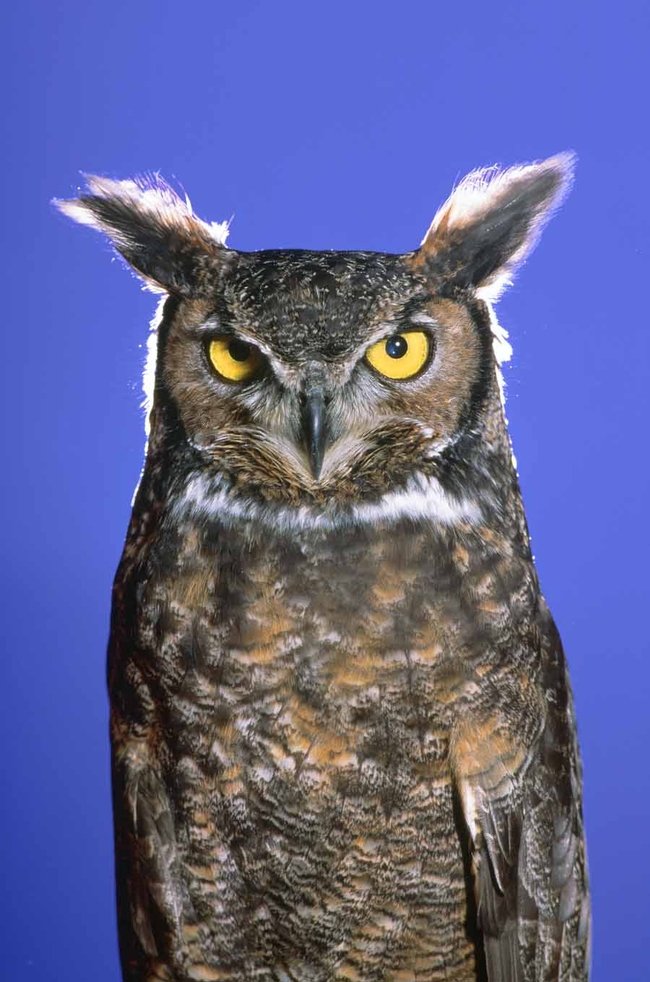
Growing up to two feet tall, weighing three pounds, and with a wingspan of nearly four feet, this huge, powerful bird is the largest owl in North America. It gets its name from tufts of feathers (“horns”) projecting from its head. Fierce predators, they will hunt prey weighing up to 15 pounds, including rabbits, grouse, and skunks (and family pets!), as well as smaller prey such as squirrels and mice. Great Horned Owls will hunt and kill all other owls, so don't place Great Horned Owl nest baskets near any other owl boxes.
Burrowing Owls have historically preferred nesting in prairies and grasslands -- areas with short grass or exposed soil where they can excavate their burrows. Today they can also be found on farms, golf courses, vacant lots, and even airports. Unlike other owls, Burrowing Owls nest in underground burrows and these sorts of open spaces facilitate burrow construction. These owls will often commandeer and enlarge burrows started by other animals. Property owners who can offer this kind of habitat can further encourage Burrowing Owls to take up residence by starting an artificial burrow that these owls can complete.
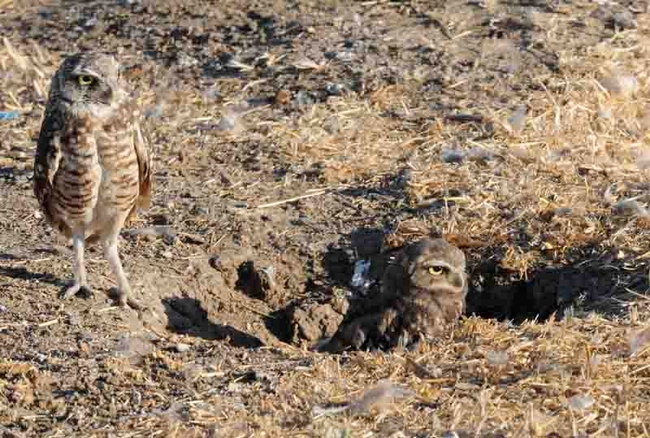
Another small owl, the Western Screech Owl ranges in size from seven to ten inches tall and weighs between three and a half and eleven ounces. Western Screech Owls have a wide-ranging diet that includes everything from worms and crayfish to rats and bats. They will even take prey larger than themselves, such as cottontail rabbits or mallard ducks. Although they are gutsy hunters, if they are frightened these masters of camouflage will elongate their body and tighten their feathers so that they appear to be a branch stub.
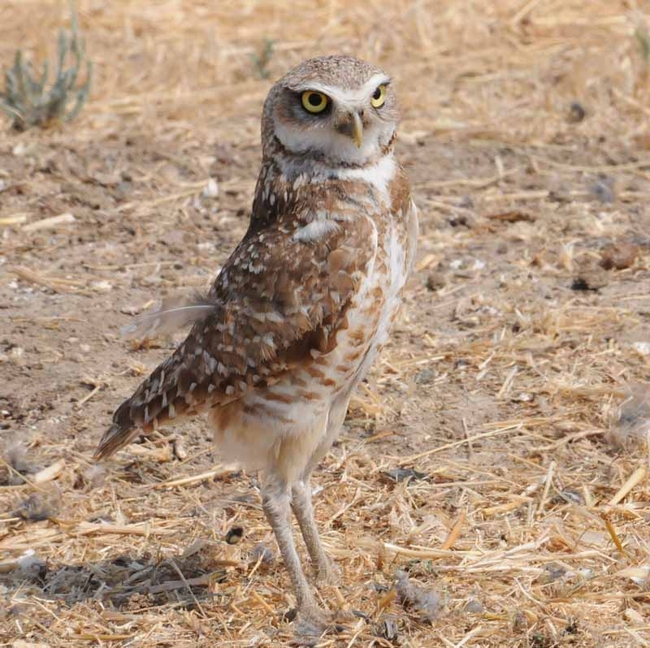
Owls can be a valuable ally for farmers and homeowners who wish to practice biological pest control. With a little research and relatively minimal effort they can be encouraged to take up residence near you.
Want to learn more about Integrated Pest Management? Attend our free workshop on October 15th, part of the Master Gardeners' Fall 2024 Workshop Series. For more information visit our website.
UC Master Gardeners of Butte County are part of the University of California Cooperative Extension (UCCE) system. To learn more about us and our upcoming events, and for help with gardening in our area visit our website. If you have a gardening question or problem, email the Hotline at mgbutte@ucanr.edu or leave a phone message on our Hotline at 530-552-5812. To speak to a Master Gardener about a gardening issue, or to drop by the MG office during Hotline hours, see the most current information on our Ask Us section of our website.